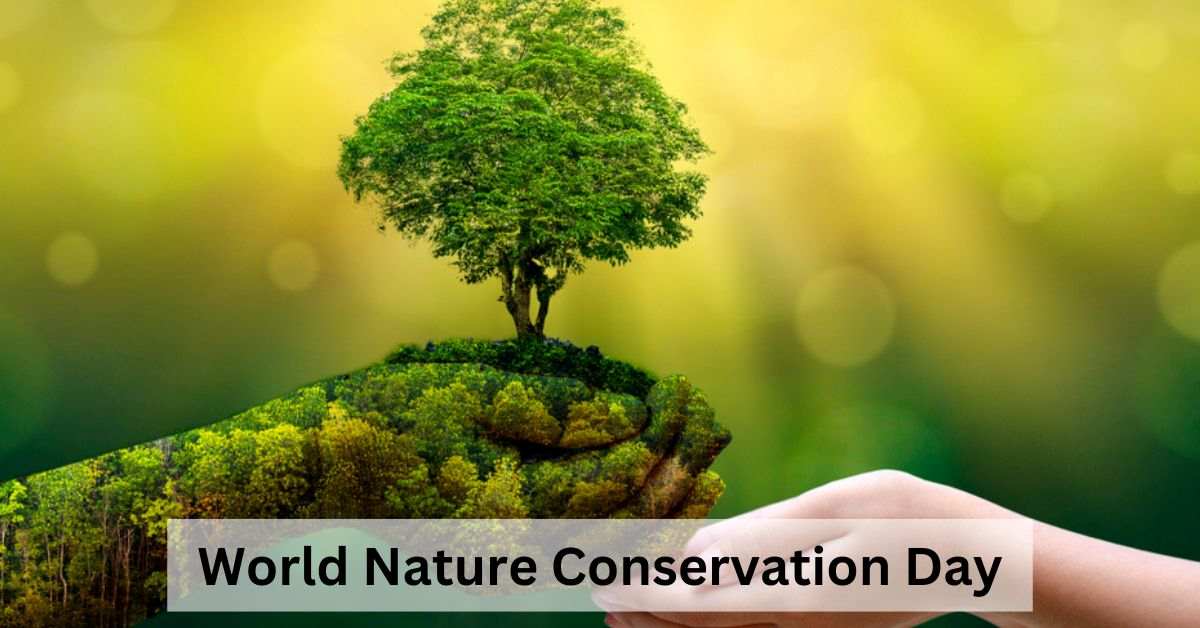“Preserving nature’s harmony, one step at a time.”
Environmental conservation efforts and biodiversity preservation are crucial aspects of ensuring the long-term sustainability of our planet. With the increasing threats posed by climate change, habitat destruction, pollution, and overexploitation of natural resources, it has become imperative to take proactive measures to protect and restore our environment. By focusing on conservation efforts and preserving biodiversity, we can safeguard ecosystems, maintain ecological balance, and secure the well-being of both present and future generations.
The Importance of Environmental Conservation Efforts in Protecting Biodiversity
The Importance of Environmental Conservation Efforts in Protecting Biodiversity
Biodiversity, the variety of life on Earth, is essential for the health and stability of ecosystems. It encompasses all living organisms, from plants and animals to microorganisms, and the intricate web of interactions between them. However, human activities have significantly impacted biodiversity, leading to the loss of species and the degradation of ecosystems. To address this issue, environmental conservation efforts play a crucial role in protecting biodiversity.
One of the primary reasons why environmental conservation is important for biodiversity preservation is the interdependence of species within ecosystems. Each organism has a unique role to play, and the loss of even a single species can have far-reaching consequences. For example, pollinators such as bees and butterflies are essential for the reproduction of many plants. Without them, the plants would not be able to produce seeds or fruits, leading to a decline in food sources for other animals. By conserving habitats and protecting species, environmental conservation efforts help maintain the delicate balance of ecosystems.
Furthermore, biodiversity provides numerous ecosystem services that are vital for human well-being. These services include the provision of clean air and water, the regulation of climate, and the control of pests and diseases. For instance, forests act as natural filters, purifying the air by absorbing carbon dioxide and releasing oxygen. Wetlands, on the other hand, help regulate water flow, reducing the risk of floods and providing a habitat for a wide range of species. By conserving biodiversity, we ensure the continued provision of these essential services, benefiting both humans and the environment.
Environmental conservation efforts also contribute to the preservation of genetic diversity. Each species contains a unique set of genes that determine its characteristics and adaptations. Genetic diversity is crucial for the resilience and adaptability of populations, allowing them to survive and thrive in changing environments. By protecting species and their habitats, conservation efforts help maintain the genetic diversity necessary for the long-term survival of species and the ecosystems they inhabit.
In addition to the ecological and genetic importance of biodiversity, it also holds significant cultural and aesthetic value. Many indigenous communities have deep cultural connections to the land and the species that inhabit it. Biodiversity is often intertwined with their traditions, beliefs, and way of life. Furthermore, the beauty and diversity of nature inspire and enrich our lives. From the vibrant colors of coral reefs to the majestic presence of large mammals, biodiversity provides us with a sense of wonder and awe. By conserving biodiversity, we preserve these cultural and aesthetic values for future generations to enjoy.
To effectively protect biodiversity, environmental conservation efforts must address various threats. These include habitat destruction, pollution, climate change, overexploitation of resources, and invasive species. Conservation strategies may involve the establishment of protected areas, the implementation of sustainable practices, and the promotion of education and awareness. Collaboration between governments, organizations, and local communities is crucial for the success of these efforts.
In conclusion, environmental conservation efforts play a vital role in protecting biodiversity. By preserving habitats, protecting species, and addressing threats, we ensure the health and stability of ecosystems. Biodiversity provides essential ecosystem services, genetic diversity, and cultural and aesthetic value. It is our responsibility to take action and safeguard the incredible diversity of life on Earth for future generations.
Innovative Approaches for Biodiversity Preservation and Environmental Conservation
In recent years, there has been a growing recognition of the importance of biodiversity preservation and environmental conservation. As human activities continue to have a significant impact on the planet, it has become crucial to find innovative approaches to address these issues. Fortunately, there have been several promising initiatives and strategies that aim to protect and restore biodiversity while also promoting sustainable development.
One innovative approach that has gained traction is the concept of ecosystem-based management. This approach recognizes the interconnectedness of different species and ecosystems and seeks to manage them as a whole. By considering the complex relationships between species and their habitats, ecosystem-based management can help preserve biodiversity while also ensuring the sustainable use of natural resources.
Another promising strategy is the use of technology in environmental conservation efforts. Advances in technology have provided new tools and methods for monitoring and managing ecosystems. For example, remote sensing technologies can be used to track changes in land use and vegetation cover, providing valuable data for conservation planning. Similarly, the use of drones and satellite imagery can help identify and monitor endangered species and their habitats, enabling targeted conservation efforts.
In addition to technological advancements, community-based conservation initiatives have also proven to be effective in preserving biodiversity. These initiatives involve local communities in the decision-making process and empower them to take an active role in conservation efforts. By involving local knowledge and expertise, community-based conservation initiatives can ensure that conservation strategies are tailored to the specific needs and priorities of the communities involved. This approach not only helps protect biodiversity but also promotes sustainable livelihoods and enhances community resilience.
Furthermore, innovative financing mechanisms have emerged as a crucial tool for supporting biodiversity preservation and environmental conservation. Traditional funding sources for conservation efforts, such as government grants and philanthropic donations, are often limited. To overcome this challenge, innovative financing mechanisms, such as payments for ecosystem services and biodiversity offsets, have been developed. These mechanisms provide financial incentives for landowners and communities to engage in conservation activities, thereby creating a sustainable funding stream for biodiversity preservation.
Lastly, education and awareness-raising campaigns play a vital role in promoting environmental conservation and biodiversity preservation. By increasing public understanding of the importance of biodiversity and the threats it faces, these campaigns can mobilize support for conservation efforts. They can also help foster a sense of responsibility and stewardship towards the environment, encouraging individuals to make sustainable choices in their daily lives.
In conclusion, innovative approaches for biodiversity preservation and environmental conservation are essential in addressing the challenges posed by human activities. Ecosystem-based management, technology, community-based conservation initiatives, innovative financing mechanisms, and education and awareness-raising campaigns all contribute to the overall goal of protecting and restoring biodiversity. By adopting these approaches, we can ensure a sustainable future for both human societies and the natural world.
Successful Case Studies in Environmental Conservation and Biodiversity Preservation
Successful Case Studies in Environmental Conservation and Biodiversity Preservation
Environmental conservation and biodiversity preservation are crucial for the sustainability of our planet. As human activities continue to impact the natural world, it becomes increasingly important to highlight successful case studies that demonstrate effective efforts in these areas. In this article, we will explore some notable examples of environmental conservation and biodiversity preservation initiatives that have achieved remarkable results.
One such case study is the Galapagos Islands in Ecuador. This archipelago, renowned for its unique and diverse ecosystem, faced numerous threats due to human activities, including invasive species, overfishing, and habitat destruction. Recognizing the need for urgent action, the Ecuadorian government, in collaboration with international organizations, implemented strict conservation measures. These included the establishment of marine reserves, the eradication of invasive species, and the promotion of sustainable tourism. As a result, the Galapagos Islands have witnessed a remarkable recovery, with endangered species such as the Galapagos giant tortoise and the Galapagos penguin making a comeback.
Another inspiring example comes from Costa Rica, a country known for its commitment to environmental conservation. In the 1980s, Costa Rica faced significant deforestation due to unsustainable logging practices and agricultural expansion. However, the government took decisive action by implementing policies that incentivized reforestation and sustainable land use. This led to the creation of protected areas and the restoration of degraded ecosystems. Today, Costa Rica boasts over 25% of its land under protected status, making it a global leader in biodiversity conservation. The country’s efforts have not only preserved critical habitats but also attracted eco-tourism, contributing to its economic growth.
Moving to Africa, the Bwindi Impenetrable Forest in Uganda stands as a remarkable example of successful biodiversity preservation. This forest is home to nearly half of the world’s remaining mountain gorilla population, which was on the brink of extinction due to poaching and habitat loss. Recognizing the importance of these majestic creatures, the Ugandan government, in collaboration with conservation organizations, implemented strict anti-poaching measures and community-based conservation programs. These efforts have resulted in a significant increase in the mountain gorilla population, providing hope for their long-term survival.
In Southeast Asia, the Tubbataha Reefs Natural Park in the Philippines showcases the successful preservation of marine biodiversity. This UNESCO World Heritage Site is home to a rich array of coral reefs and marine species. However, illegal fishing practices and destructive fishing methods threatened its delicate ecosystem. To combat these challenges, the Philippine government established strict regulations and increased surveillance and enforcement efforts. These measures have led to a significant reduction in illegal fishing activities and the recovery of coral reefs, making Tubbataha Reefs a model for marine conservation worldwide.
These case studies demonstrate that effective environmental conservation and biodiversity preservation are possible with the right combination of political will, community involvement, and international cooperation. By implementing sustainable practices, protecting critical habitats, and engaging local communities, we can ensure the long-term survival of our planet’s diverse ecosystems and the species that depend on them.
In conclusion, successful case studies in environmental conservation and biodiversity preservation provide valuable insights into the strategies and approaches that can make a difference. The Galapagos Islands, Costa Rica, Bwindi Impenetrable Forest, and Tubbataha Reefs Natural Park are just a few examples of the remarkable achievements that have been made in these areas. By learning from these successes and replicating them on a larger scale, we can create a more sustainable future for our planet and its precious biodiversity.In conclusion, environmental conservation efforts and biodiversity preservation are crucial for the long-term sustainability of our planet. These efforts aim to protect and restore natural habitats, conserve endangered species, and promote sustainable practices. By preserving biodiversity, we can maintain the delicate balance of ecosystems, ensure the availability of essential resources, and mitigate the impacts of climate change. It is imperative that individuals, communities, governments, and organizations work together to prioritize and implement effective conservation strategies to safeguard our environment for future generations.




